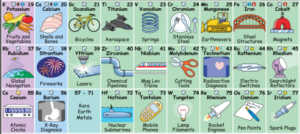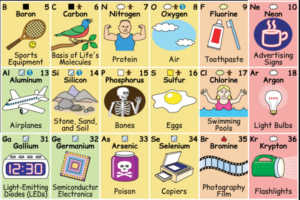When we were in high school we probably all took at least one semester of chemistry. But how many of us actually remember what we learned? For instance, how many elements from the periodic table could you name? If you’re shaking your head and shrugging then you’re not alone. A survey conducted by the Philadelphia-based nonprofit, The Science History Institute, concluded that 59% of Americans can’t name more than 10 of the 118 elements listed on the period table. And on top of that, Live Science has reported that one in five Americans are unable to name a single element!
For a little refresher for those who might need it, the periodic table is a chart of chemical elements that are arranged by the order of their increasing atomic number. They’re organized into groupings such as rows or columns that show elements with similar properties. The periodic table is very important in terms of being a scientific application.
While there may be some of us who can name more than 10 elements – or even all the elements – chances are that we’re not really sure what they are used for in real life. As a way to either remind people of all the elements as well as to give them a better understanding of what they do in everyday life, Boeing software engineer Keith Enevoldsen has created a very helpful graphic.

Enevoldsen’s graphic chart is aptly titled “The Periodic Table of Elements, in Pictures and Words” as it combines the traditional periodic table with helpful pictures about where one might encounter certain elements in everyday life. While the chart was created to help students of all ages – from elementary to high school – get a better grasp of the periodic table and its many elements, it’s also helpful for anyone of any age who might want to refresh their memory.

The elements on the chart are color-coded based on the chemical groupings. And as Enevoldsen’s website further explains, “Other info panels describe atomic structure, chemical bonding, and radioactivity. It does not overload kids with a lot of detailed numbers, but it does provide some simple rules-of-thumb about atomic weights and valence numbers.”
Not only does this chart help anyone to learn everything from an element’s atomic number, everyday use, material state (i.e., whether it is a solid, liquid, or gas), etc., but it also comes in various useful forms meaning that the educational source can be printed out as flashcards or bought as a full-sized poster.













